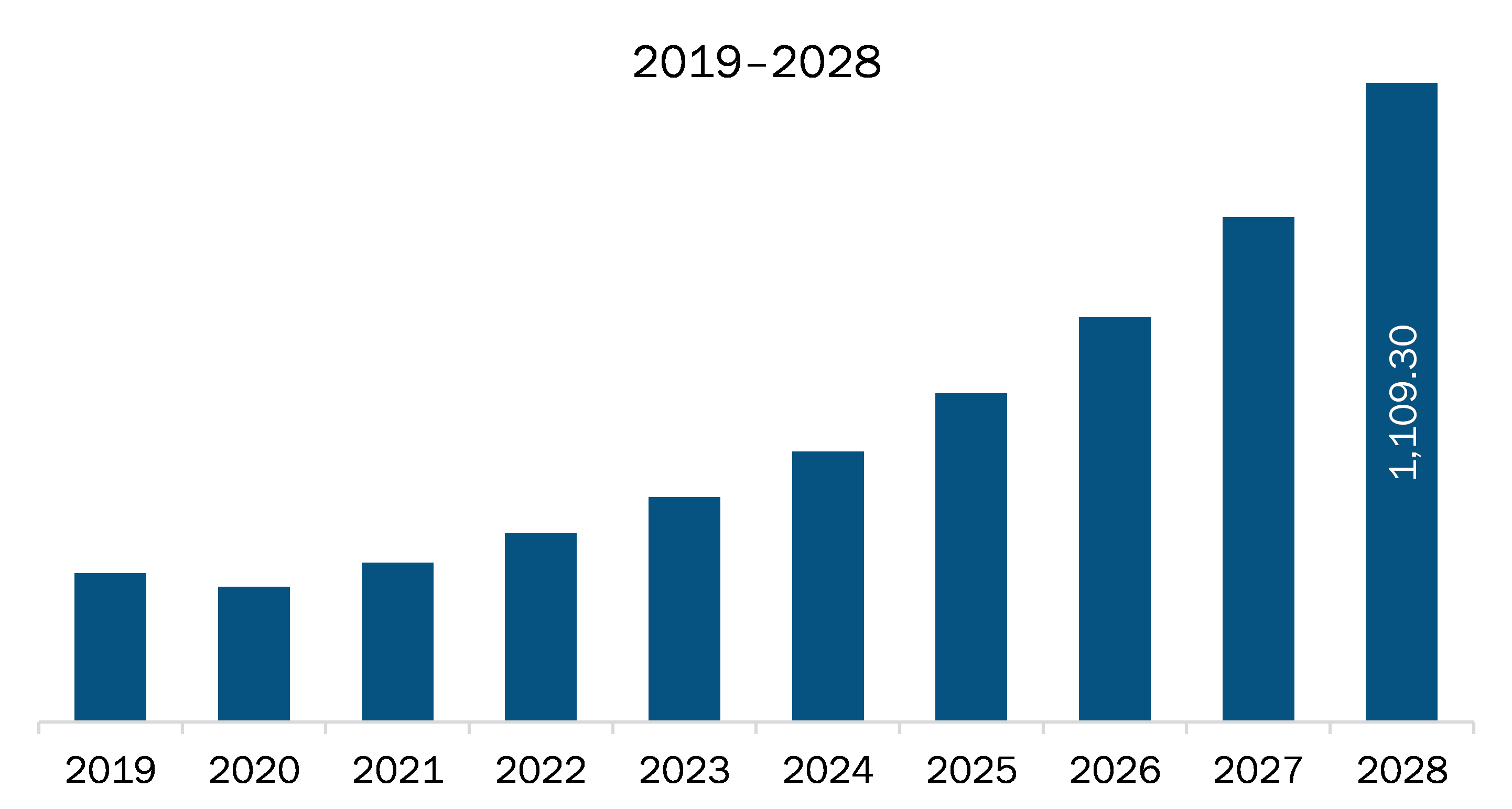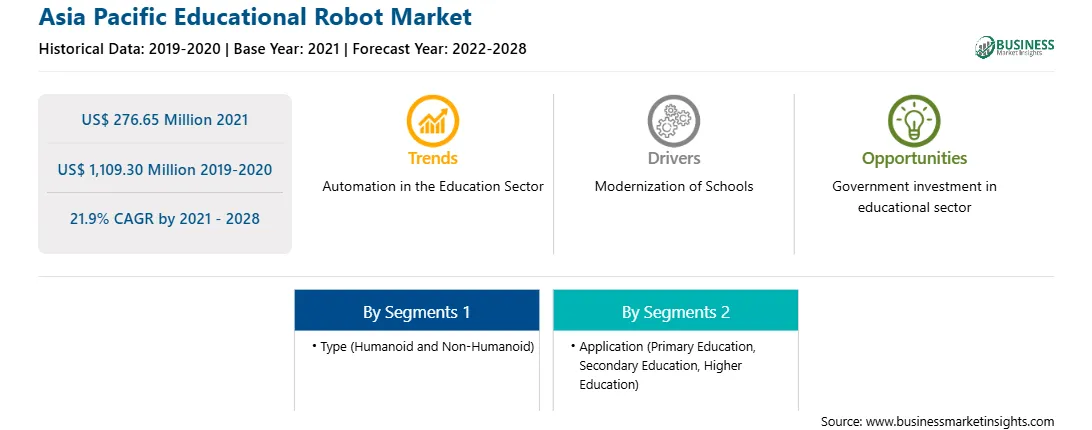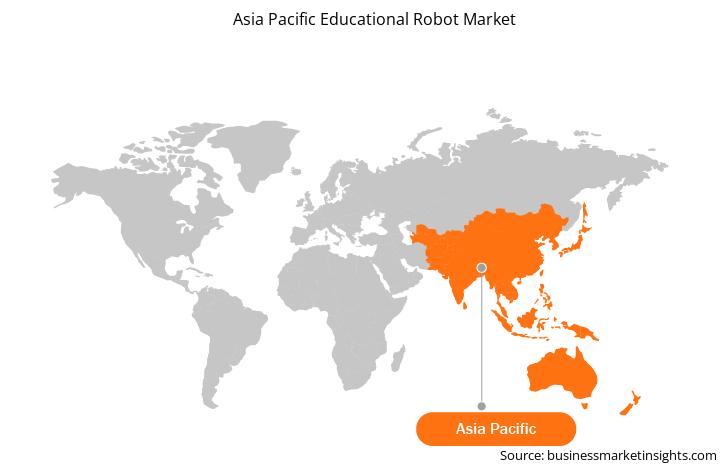APAC is the fastest-growing educational robot market worldwide. The region is the biggest innovator in the consumer robot space. As the region’s most innovative robotics start-ups continue developing their products, they’re increasingly looking to expand globally. For instance, start-ups such as Makeblock have already indicated their global ambitions, and others are rapidly following. Further, in 2017, Tencent Holdings, a Chinese internet giant, has led a US$ 41 Mn funding round for Wonder Workshop, US educational robot company, as it looks for expansion in the APAC region owing to the growing demand for STEM education. The company has partnered with MindWorks Ventures as well as an education publishing company Classroom to expand its presence in Hong Kong. The company’s products are already employed in over 150 primary and secondary schools in Hong Kong. Also, Australia's national school curriculum mandates students to experiment with simple, programmable devices such as robots after three years of primary school. Furthermore, the government of Singapore is investing in a robot known as “KIBO,” which enable young kids to program robots to execute different tasks. This is a part of the government’s introduction of screen-free robots that assist children in preparing for STEM subjects at school, which also included BeeBot, a small educational robot.
Asia Pacific (APAC) is a highly dynamic region in terms of economic growth as well as positive education industry outlook. The region is also characterized by the presence of many developing countries such as China, India, and many South Asian countries where investments in education sector as well as in startups is quite high. The rising level of urbanization, high population growth, and technology adoption in education sector are some of the key driving factors which makes APAC an attractive market for the future growth of educational robotics market. APAC is home to around 60% of world population that includes the two most populous countries of the world, China and India. In addition to the huge population, the region also has presence of huge young and tech savvy school and college going population. All these factors are complementing the demand of various types of technological solutions in the region. The ongoing COVID-19 outbreak and closure of schools and other educational institutions in the region has negatively impacted the growth of the educational robot adoption across the region. Moreover, China is the manufacturing hub of educational robots, the closure of all manufacturing activities across the country have significantly impacted the growth of the market.

Strategic insights for the Asia Pacific Educational Robot provides data-driven analysis of the industry landscape, including current trends, key players, and regional nuances. These insights offer actionable recommendations, enabling readers to differentiate themselves from competitors by identifying untapped segments or developing unique value propositions. Leveraging data analytics, these insights help industry players anticipate the market shifts, whether investors, manufacturers, or other stakeholders. A future-oriented perspective is essential, helping stakeholders anticipate market shifts and position themselves for long-term success in this dynamic region. Ultimately, effective strategic insights empower readers to make informed decisions that drive profitability and achieve their business objectives within the market.

| Report Attribute | Details |
|---|---|
| Market size in 2021 | US$ 276.65 Million |
| Market Size by 2028 | US$ 1,109.30 Million |
| Global CAGR (2021 - 2028) | 21.9% |
| Historical Data | 2019-2020 |
| Forecast period | 2022-2028 |
| Segments Covered |
By Type
|
| Regions and Countries Covered | Asia-Pacific
|
| Market leaders and key company profiles |
The geographic scope of the Asia Pacific Educational Robot refers to the specific areas in which a business operates and competes. Understanding local distinctions, such as diverse consumer preferences (e.g., demand for specific plug types or battery backup durations), varying economic conditions, and regulatory environments, is crucial for tailoring strategies to specific markets. Businesses can expand their reach by identifying underserved areas or adapting their offerings to meet local demands. A clear market focus allows for more effective resource allocation, targeted marketing campaigns, and better positioning against local competitors, ultimately driving growth in those targeted areas.

The educational robot market in APAC is expected to grow from US$ 276.65 million in 2021 to US$ 1,109.30 million by 2028; it is estimated to grow at a CAGR of 21.9% from 2021 to 2028. Increasing focus towards STEM education, Various educational institutes are showing focus on the improvement in teaching STEM (Science, Technology, Engineering, and Mathematics) disciplines. STEM helps to learn these specific disciplines of Interdisciplinary learning. Educational robots help to improve the teaching methods for STEM disciplines. Educational robots have high computing power and help to deliver STEM lessons to modern education. It helps to learn naturally and adopt the principle of computational thinking. Moreover, the DIY kits are boon for the educational robot markets. It enables to design and program and enhances the problem learning skills among STEM students. Schools and colleges are including a various robotic curriculum to enhance the problem-solving skills among students. Moreover, various government initiatives and programs are encouraging schools and universities to adopt robotic based learning. All these factors are expected to significantly drive the APAC educational robot market during the forecast period. This is bolstering the growth of the educational robot market.
In terms of type, the non-humanoid segment accounted for the largest share of the APAC educational robot market in 2020. In terms of application, the higher education segment held a larger market share of the educational robot market in 2020.
A few major primary and secondary sources referred to for preparing this report on the educational robot market in APAC are company websites, annual reports, financial reports, national government documents, and statistical database, among others. Major companies listed in the report Hanson Robotics Limited; Lego System A/S; Life & Science, Inc; Robotis Co., Ltd.; Sanbot Innovation Technology., Ltd; SoftBank Robotics Group Corp.; among others.
The Asia Pacific Educational Robot Market is valued at US$ 276.65 Million in 2021, it is projected to reach US$ 1,109.30 Million by 2028.
As per our report Asia Pacific Educational Robot Market, the market size is valued at US$ 276.65 Million in 2021, projecting it to reach US$ 1,109.30 Million by 2028. This translates to a CAGR of approximately 21.9% during the forecast period.
The Asia Pacific Educational Robot Market report typically cover these key segments-
The historic period, base year, and forecast period can vary slightly depending on the specific market research report. However, for the Asia Pacific Educational Robot Market report:
The Asia Pacific Educational Robot Market is populated by several key players, each contributing to its growth and innovation. Some of the major players include:
The Asia Pacific Educational Robot Market report is valuable for diverse stakeholders, including:
Essentially, anyone involved in or considering involvement in the Asia Pacific Educational Robot Market value chain can benefit from the information contained in a comprehensive market report.